best trading strategy for cryptocurrency
Day trading presents an opportunity for those who put in the time and effort to understand the market in which they are trading. This is no different for cryptocurrencies. Even more so, as this new industry has brought with it significant opportunity for day traders to profit from price discrepancies and movements that don't exist in other, more mature markets.
A quick introduction to day trading
Day trading is the process of speculating on financial products and assets over the span of a single day. Day traders will often buy and sell any number of financial instruments in the span of several hours, or less, and profit from speculating on short-term price movements. Day traders stay up-to-date on what moves markets in the short term and can place hundreds of orders in a single day to profit in the long run.

Cryptocurrency: An overview
For decades, traders have focused on a few distinct markets to take advantage of profit-making opportunities. Over the past several years, cryptocurrencies have been seen as a growing market with increased liquidity and opportunity for trading profit. A cryptocurrency is a digital asset secured by consensus algorithms, such as proof-of-work or proof-of-stake, with transaction information stored on a digital ledger. Today, there are thousands of cryptocurrencies in existence, creating an array of opportunities for day traders.
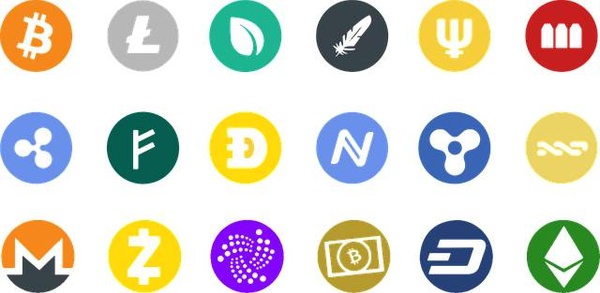
Bitcoin
In the world of cryptocurrency, bitcoin has become the industry standard. The digital asset has grown not just in popularity, but in its technology as well. Bitcoin is designed as a form of decentralized digital currency that is usable across the globe without the fear of censorship resistance. Bitcoin has a fixed supply of 21 million that can ever be mined. It has remained the biggest cryptocurrency on the market, with a valuation close to $200 billion. Roughly half of overall trading activity occurs in bitcoin, with billions of dollars in daily turnover. Due to the ample liquidity, bitcoin is one of the most popular choices for those looking to day trade crypto.
Alt coins
A cryptocurrency outside of bitcoin is called an alt coin. Cryptocurrencies in this category have various technological differences and uses, from building decentralized applications (dApps) to creating a world of decentralized finance, and beyond. One of the most well-known alt coins is Ethereum, a programmable open-source blockchain. Furthermore, many other alt coins take the form of ERC-20 tokens, which means they are built on Ethereum protocol. These include EOS and TRON.
Stablecoins
There is one category of cryptocurrency that has become increasingly important for traders and investors. Stablecoins represent cryptocurrencies that are relatively price-stable, generally by pegging themselves to fiat currency. The largest stablecoin is Tether (USDT), whose price is pegged to the US Dollar. For regulatory reasons, many exchanges avoid USD, but listing coins against USDT allows them to quote against the world's primary reserve currency without actually touching it directly. Tether is a great trading pair for bitcoin and alt coin traders as it allows for easy trading within cryptocurrencies without having to off-load capital to fiat currency and back into the market.

Market structure - Day trading crypto
Exchanges / execution venues
The cryptocurrency market is highly fragmented, with exchanges operating in dozens of legal jurisdictions across the globe. In many countries, it is extremely easy to set up an exchange, which has led to a proliferation of trading platforms. In traditional financial markets, traders often can only access the exchange through a broker who is a member of the exchange. However in crypto, exchanges act as not only an execution venue, but also a broker.
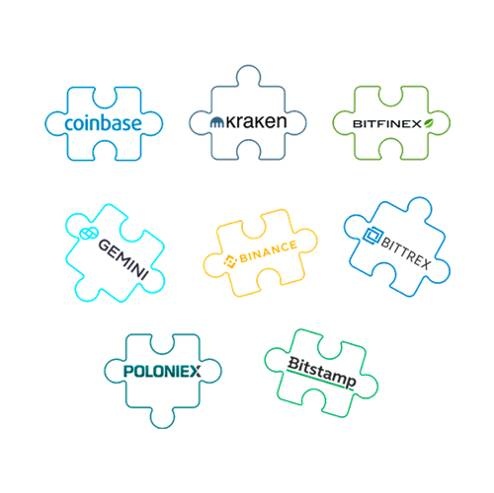
Each exchange must attract market makers, also known as liquidity providers, to provide bids and offers to the exchange order book. These bids and offers influence price and liquidity. Unlike US equities, where regulation requires brokers to execute customer trades at the best price in the market (i.e. across all the exchanges), there is no similar requirement in crypto. Therefore, a small exchange with low liquidity will often deliver inferior prices to customers of that exchange.
Since exchanges can differ significantly in terms of liquidity or pricing, such as due to supply and demand variations, there is a lot of opportunity, and risk, for crypto day traders.
Access to markets
Cryptocurrency exchanges cater to an international customer base, are based throughout the world, are generally unregulated, and are therefore open 24/7/365. Crypto day traders can place orders at any time of day or night, and exchanges operate continuously to provide easy access for their users. Though, practically speaking, exchanges may be down periodically for maintenance and system upgrades.
Fiat vs. Stablecoins
Transacting in USD, EUR, or other fiat currencies brings with it a high regulatory burden. Exchanges like Coinbase, Kraken, and Bitstamp, who have large US and European customer bases are willing to accept this regulatory burden and invest in effective AML/KYC programs. As such, exchanges listing fiat pairs are also generally more selective in which cryptocurrencies they offer to their customers.
Many exchanges, especially those in Asia and outside the US, such as Binance, Huobi, and OKEx, do not transact in USD, but only in stablecoins or other cryptocurrencies. Given the lower regulatory requirements, traders can often find a much larger selection of cryptocurrencies priced against stablecoins. Transacting entirely in cryptocurrencies allows users to bypass the traditional financial system altogether.
Funding - Day trading crypto
Capitalizing at exchange
Crypto day traders have a variety of options when it comes to funding their exchange accounts. Almost all exchanges support bank accounts (ACH) and wire transfers, while debit card payments are also quite common. Other payment methods such as credit card and PayPal are less common, but also accepted at some exchanges. Some of these alternative funding options can carry with them high fees, so be sure to read the fine print. Of course, for those already in the game, the best option is often to fund your account directly from your crypto wallet.
Lack of leverage / shorting
Generally, day traders opt to take advantage of leverage in order to maximize returns. Leverage is the process of utilizing a small amount of capital to open positions greater than the capital on-hand. This can magnify the returns of trades without risking significant capital upfront, though it can also magnify losses. Unfortunately for cryptocurrency traders, there is a lack of leverage on most cryptocurrency spot exchanges, though this is starting to change. Regulated exchanges are slowly opening up leverage trading for customers, and recently, Coinbase Pro has begun to offer leverage for customers in almost half of the US. This could serve as an excellent option for those interested in day trading crypto.
On top of a lack of leverage, it is difficult to find ways to directly short cryptocurrencies. Shorting , or betting against an asset, is the most direct way to profit from the decline of an asset's price. For cryptocurrencies, there is no real option for shorting these assets on regulated exchanges.
Security
When it comes to security, cryptocurrency exchanges as a whole have a mixed track record. There have been numerous accounts of exchanges being compromised, and traders' cryptocurrency being stolen as a result. However, in recent years security of most exchanges has improved considerably and hacks have become increasingly rare. But security is still one of the biggest considerations when choosing where to day trade cryptocurrencies. An exchange is only as good as the security it provides its traders, and traders should only opt for exchanges which can ensure the security of all funds on its platform. Most of the best-known exchanges, especially those operating in well-regulated jurisdictions, have had extremely good track records.
Market data and analytics - Day trading crypto
Order book
An exchange order book displays a real-time list of outstanding order requests from traders to either buy or sell a cryptocurrency. An order book is organized by price, but also displays the order quantity as well. The difference between the highest buy order and the lowest sell order is known as the spread. Spreads on cryptocurrency exchanges are often wider than exchanges of other assets, due to its unregulated nature and more extreme price fluctuations, as well as relatively high fees.
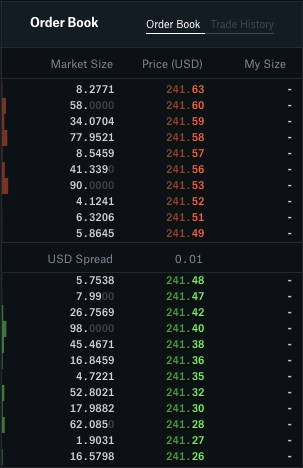
Trades
Almost all exchanges also provide a short history of the most recent trades made at the exchange. Users can view the trade size, price, and time the trade was made. This data can be especially useful for day trading cryptocurrency as it will help traders get a good indication of the cryptocurrency's price movement in the short-term.
Exchange premium/discount
Because exchanges are not linked to one another, there can be price discrepancies of the same asset across exchanges. This causes a cryptocurrency to sell for a premium or discounted price at one exchange compared to another. These discrepancies can be much larger on cryptocurrencies than they are on exchanges of other assets. Being able to take advantage of these discrepancies is an excellent way to profit when day trading crypto.
Trade execution - Day trading crypto
Fees and tiers
Cryptocurrency exchanges vary in their fee structures. Most exchanges operate on a fee-per-trade model, with a fixed percentage or monetary fee for each trade conducted. Many vary fees based on a trade's status as a maker or taker, with maker fees often being lower in order to incentivize traders to add liquidity to the market, which in turn can attract new traders to the market. Fees are often reduced based on trading tiers centered around 30-day trade volume. Fees for traders in the best tiers can be a small fraction of the fee for traders in the entry-level tier. For a closer look at exchange fees, please take a look at the following: https://www.covemarkets.com/blog/which-bitcoin-exchanges-have-the-lowest-trading-fees
There can also be deposit and withdrawal fees depending on the exchange. These can vary in cost, but can be as high as 5% of the deposit/withdrawal request at some exchanges.
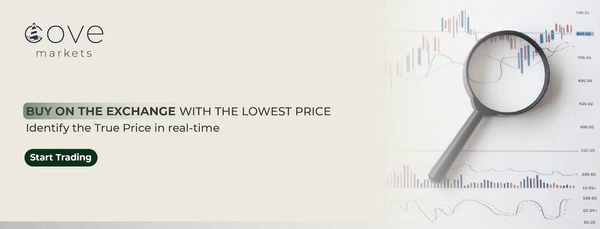
Maker vs. Taker
In any market there are two parties exchanging assets with one another, the party who has a limit order resting passively in the order book and the market taker who triggers the trade. Many of the orders resting in the order book come from professional market makers , who provide liquidity to the market as they refresh and update their prices based on market activity. Typically this group consists of professionals relying on computer algorithms to update and manage orders, operating on a higher level of sophistication than the typical day trader. But many of the limit orders are also individuals hoping to get a better fill price or pay a lower fee. For more information on professional market makers, please check out the following: https://www.covemarkets.com/blog/how-do-market-makers-make-money-trading-bitcoin
On the flipside, a market taker is someone who is looking for liquidity and quick trade execution. While market takers want to get the best price they can for a trade, they also place a premium on the immediacy of the trade itself.
Order types
The most basic order type is a market order which immediately executes a trade based on the current available price. Alternatively, a limit order is when a trader specifies the price they are willing to buy or sell an asset, and the order is filled once that price specification is met. Traders can often set a time-in-force (TIF), specifying immediate-or-cancel (IOC) or good-til-cancelled (GTC).

Stop-loss orders an important tool in the toolkit of any day trader. A stop-loss order limits the losses of any trade by automatically selling a cryptocurrency once it falls below a specified price. A different type of stop-loss, known as a trailing stop , causes the trigger price to rise, in the case of a sell trailing stop, as the cryptocurrency price rises, thus locking in profits.
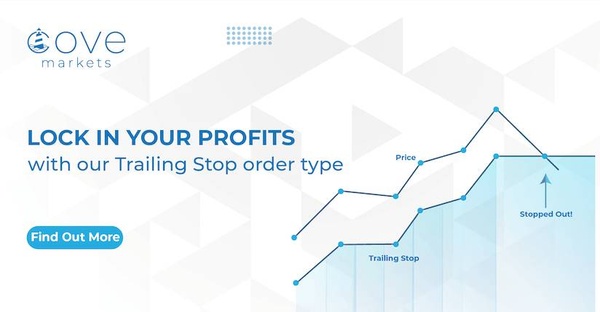
Arbitrage - Day trading crypto
While we would like to think that markets are 100% efficient, the truth is, they often are not. As a result, there are opportunities to take advantage of price discrepancies across markets and financial products as a way to turn a profit. Arbitrage is the trading method where one takes advantage of discrepancies in price and profits from short-term trades between markets or products.
Because cryptocurrency is a relatively fragmented and underdeveloped asset class, there remains an abundant amount of arbitrage opportunities for crypto day traders to profit from.
Cross-exchange
Pricing across cryptocurrency exchanges is rarely consistent. Unlike the stock market, which is regulated, cryptocurrency exchanges are not directly connected, and therefore prices are determined by the supply and demand of users on a particular exchange. These prices can therefore fluctuate based on exchange locality, user base, and more.
Cross-product
There is also the opportunity for arbitrage across cryptocurrencies within the same exchange. A trader can identify price discrepancies from one trading pair to another, and recognize an opportunity to profit from a discounted price between cryptocurrencies themselves on the same exchange. This often requires trading in and out of multiple cryptocurrencies in order to take advantage of cross-product arbitrage that exists.
More sophisticated crypto day traders might run "statistical arbitrage" strategies, where price relationships are modeled from historical data and traded on when there is a divergence.
Spot vs. Derivatives
Spot trading deals with the exchange of the physical asset, while derivatives are financial instruments whose values are derived from and dependent on spot prices.
Futures are the most commonly traded derivative and reflect a standardized agreement to exchange an asset at a future date. As the cryptocurrency industry has grown, exchanges have begun to provide more opportunities for futures trading that did not previously exist. Exchanges like CME and Bakkt offer bitcoin futures trading in lieu of spot trading for its customers. The difference in price between spot and futures can come from both the cost of carry as well as supply and demand differences. Cost of carry for a purely financial instrument like bitcoin is determined by the risk-free rate of return over the period.
Other derivatives like perpetual swaps and options have become increasingly popular in recent years, but also carry with them more complexity that a trader should be sure to understand well before trading.
Technical analysis/charting - Day trading crypto
Cryptocurrency charts can be read in the same fashion that a day trader would with any other asset. Technical analysis takes into account the history of an asset's price and key indicators to predict its future price movement. Many exchanges have advanced charting tools like trendlines and moving averages which are extremely helpful in conducting technical analysis.
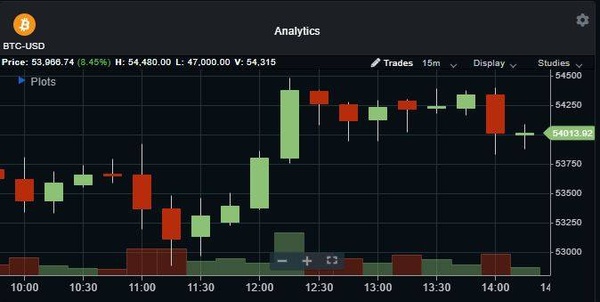
Regulation - Day trading crypto
Regulation plays a key role in the security and safety of cryptocurrency trading. As previously discussed, security is one of the key concerns for traders who are concerned about the security of their funds. Regulation of exchanges helps to mitigate these risks and keep traders safe.
US vs. Non-US
Cryptocurrency regulation in the United States is not well established, but regulators and market participants are working to continually improve clarity. With the federal government failing to provide adequate regulations, most states in the country have introduced statewide legislation to regulate all companies in the industry. While most states are relatively lax, the New York State Department of Financial Services (NYDFS) introduced a BitLicense, which is required in order to operate in the state of New York, but which has an extremely burdensome process and set of requirements. Additionally, many market participants want to avoid needing to register as broker-dealers, since this carries a high legal and regulatory burden, so they are careful to not engage in transactions that would subject them to securities law or in products that fail the "Howey Test." Many of the most popular cryptocurrencies, such as bitcoin and ethereum, have been characterized as commodities rather than securities and large US-based exchanges, like Coinbase, have done their due diligence.
There are some regulations that all US-based cryptocurrency exchanges comply with — including Know Your Customer (KYC) and Anti-Money Laundering (AML) regulations — which require exchanges to confirm the identity of their customers and ensure anyone engaged in illegal activity is prevented from participating in the market.
Outside of the United States, there are varying degrees of regulation for digital assets which vary based on country. For instance, crypto-friendly countries like Switzerland regulate ICOs, exchanges, and other cryptocurrency businesses. While a few countries like Morocco, Bolivia, and Vietnam have banned the use of all cryptocurrencies, regardless of their function.
Execution quality
The ability for an exchange to execute trades quickly and at fair prices is characterized by its execution quality. While speed of trade execution can be measured somewhat objectively, price quality is harder to measure. A narrow bid-ask spread, large volume in the order book, and prices in line with those of other exchanges will all lead to high execution quality with price. Execution quality is an extremely important factor when determining whether one can succeed at day trading cryptocurrency.
Tax implications - Day trading crypto
There has been much discussion on how cryptocurrencies are treated in the eyes of the IRS. In 2014, the IRS concluded that bitcoin and other cryptocurrencies are considered " intangible property " and not currency. Currently, crypto-to-crypto trades are subject to capital gains tax similarly to equities. Crypto day traders will therefore be subject to short-term capital gains tax on their trades. One important implication of this ruling is that the IRS tax regulation around wash sales do not apply . This allows crypto traders to immediately claim losses on a trade even if they repurchase that same cryptocurrency within 30-days, something that is not allowed in the equities markets. Of course, all active market participants should consult a tax lawyer if they have questions.
General tips - Day trading crypto
Risk capital
When day trading crypto, traders should never risk more capital than they can afford to lose. Doing so will surely lead to financial stress. When assessing trading opportunities, day traders should consider the 1% rule , which states that no more than 1% of a trader's capital should be risked on a single trade. This helps to spread capital across many trades and lessen the risk if a single trade goes poorly.
Ease into the process
No matter how ready a trader thinks they are for day trading cryptocurrency, they should tread lightly. This new asset class is filled with potential, but can also be dangerous and unpredictable. It's important that day traders start slowly, and only place small trades in the beginning before they fully understand the market. As a trader becomes more comfortable, they can increase their trades and begin to look into more elaborate strategies.
Education
Learning what moves cryptocurrency markets takes a boatload of education. Cryptocurrency assets vary in use and function, making them much different than trading stocks. At the end of the day, a trader can do everything in their power to control for unknown variables and understand the market as much as possible, but there is no substitute for the education that comes from the process of trading itself. While we have done our best to educate the reader on the basics of day trading cryptocurrency, nothing here constitutes legal or investment advice and you should consult a professional advisor if you have questions.

Final thoughts - Day trading crypto
As a relatively new market, cryptocurrencies are still in uncharted territory. The entire industry is still figuring out how to handle government regulation, leverage trading, and security, among other things. This means that day trading crypto brings with it great uncertainty, but also great opportunity for traders who know where to look.
The market is extremely fragmented with dozens of different exchanges. Prices and fees can vary significantly. Trading occurs in the spot market and derivative market, against fiat and against stablecoins, or other cryptocurrencies, and across various legal jurisdictions. Traders with the right tools and understanding can take advantage of this fragmentation and complexity.
Day trading cryptocurrency isn't for everyone, and can certainly lead to financial losses if executed poorly. But for those that take the time to educate themselves on the ins-and-outs of the industry and identify a solid trading strategy, the upside can be enormous.
For a closer look at day trading cryptocurrency across multiple exchanges, please check out the following: https://www.covemarkets.com/blog/daytrading-cryptocurrencies-with-multiple-exchanges
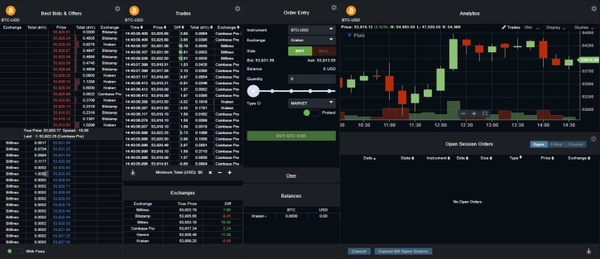
Scott Knudsen is CEO of Cove Markets. He spent 14 years at IMC Trading, working in Chicago, Amsterdam, and Hong Kong. Follow him on Twitter here.
🔥 How To Stay in the Loop 🔥
- Follow us on Twitter @CoveMarkets
- Join our active Reddit community
- Participate in daily discussions in our Telegram group
best trading strategy for cryptocurrency
Source: https://www.covemarkets.com/blog/day-trading-cryptocurrency-strategy-guide/

0 Response to "best trading strategy for cryptocurrency"
Post a Comment